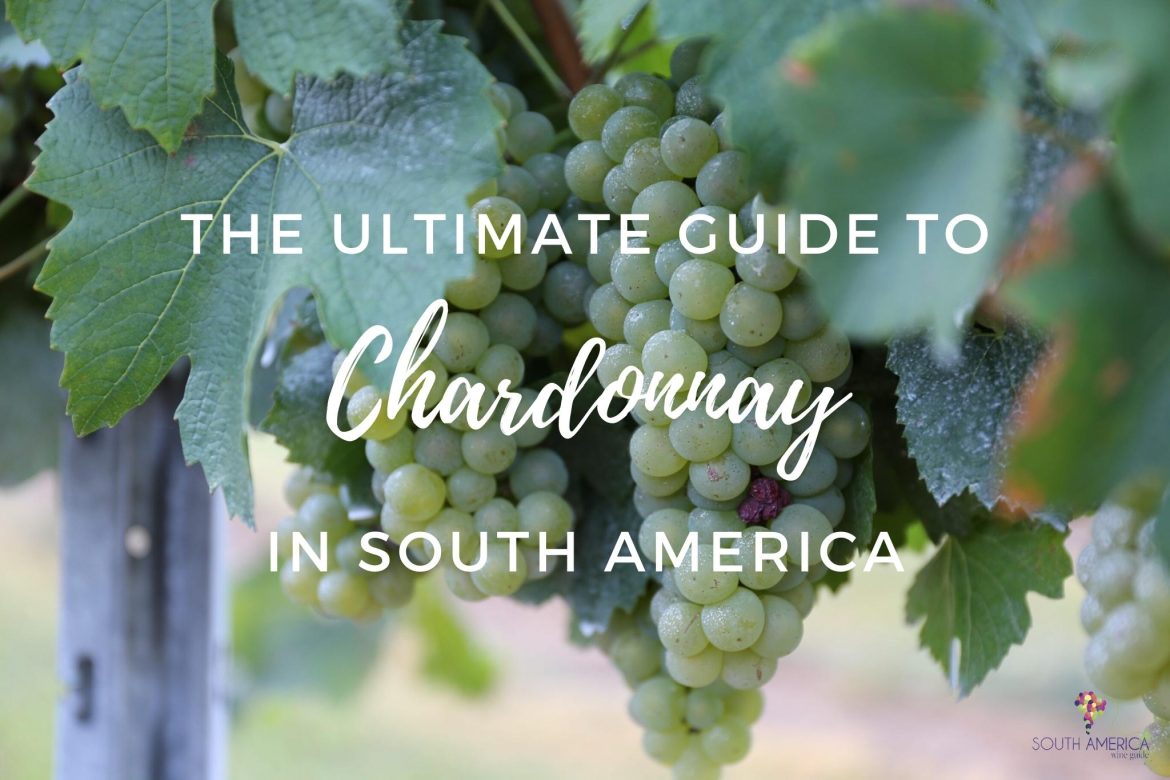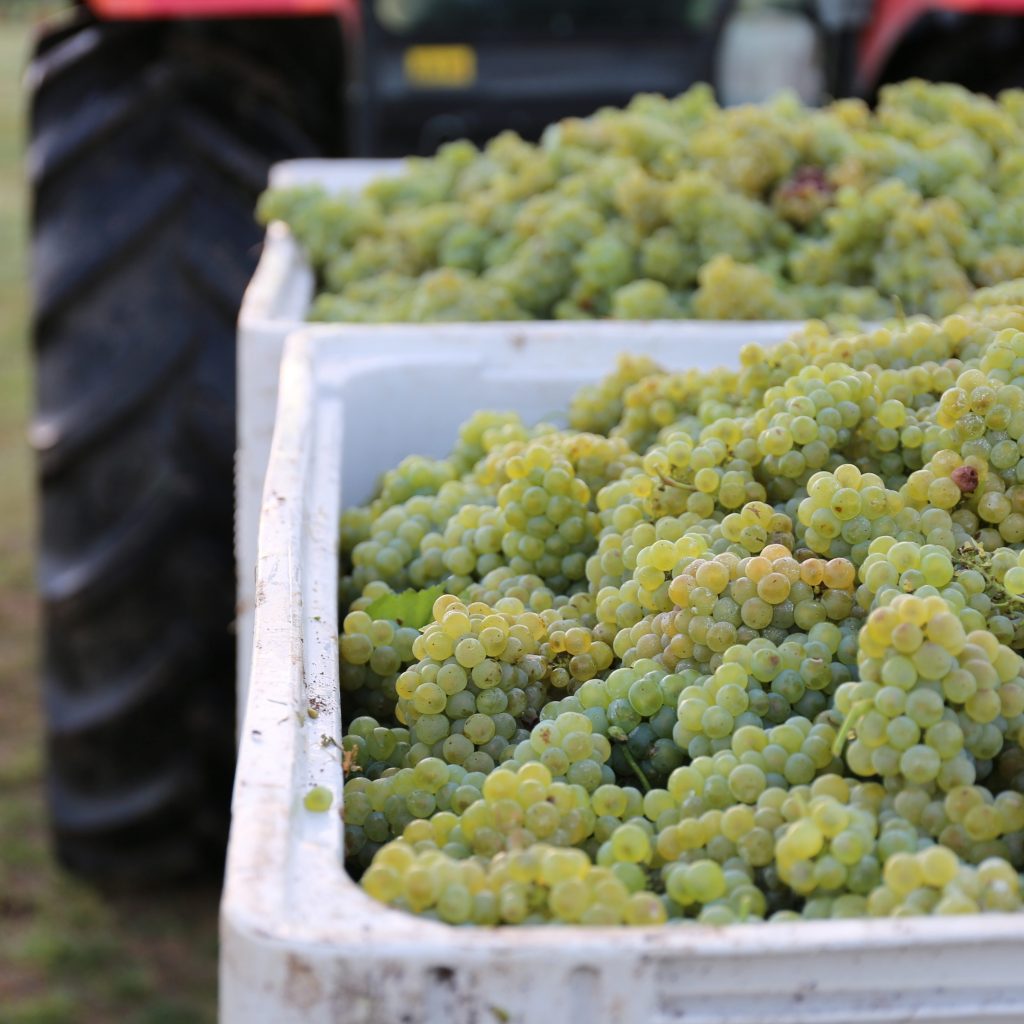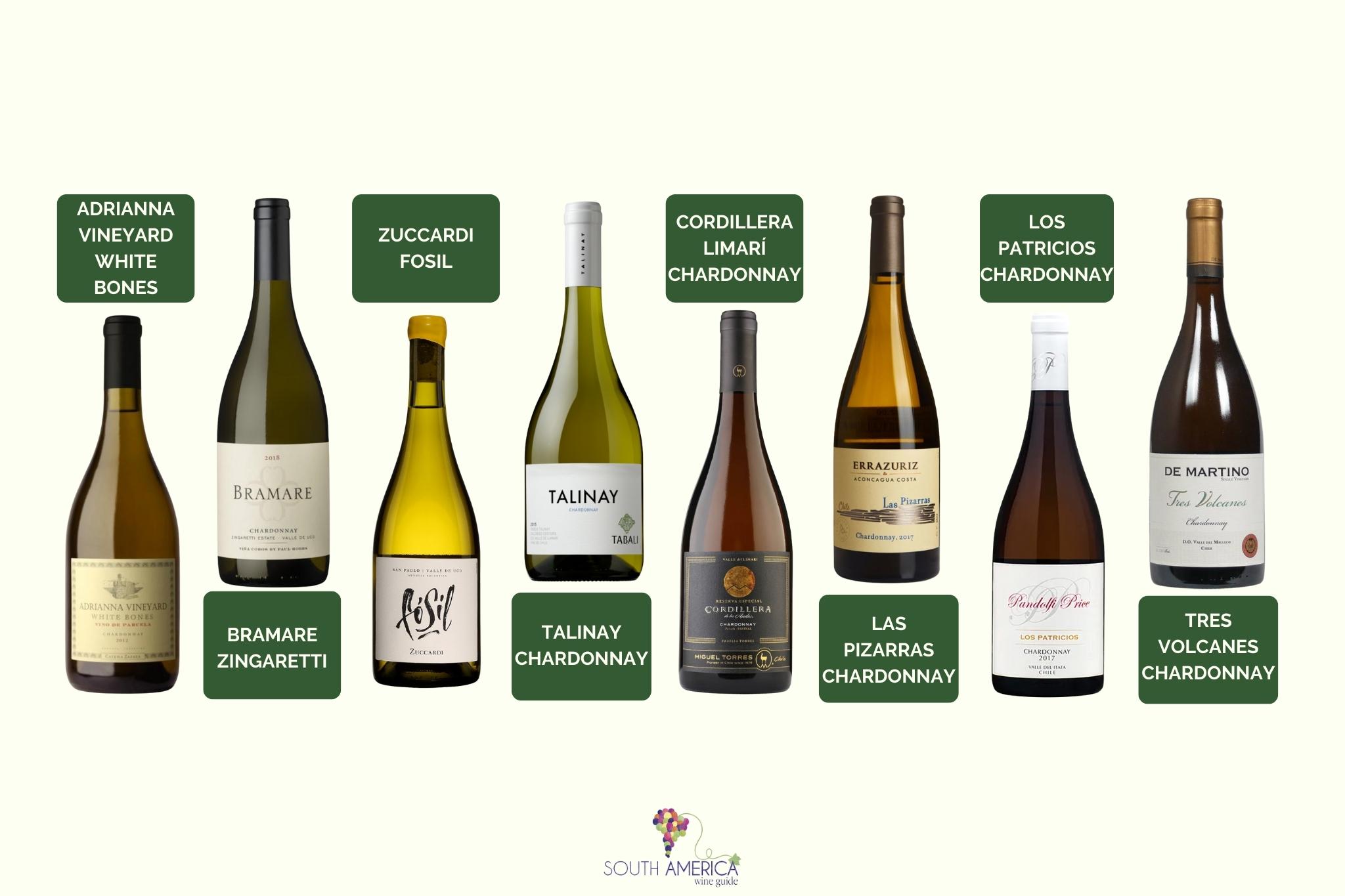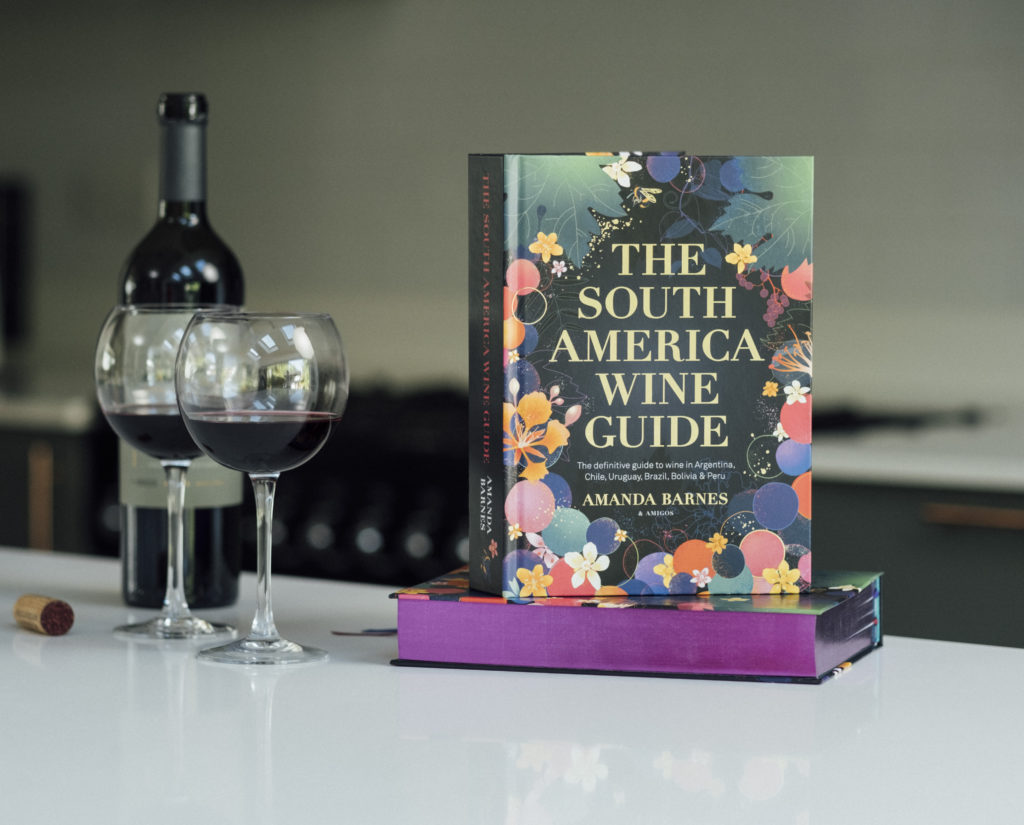As we celebrate Chardonnay Day this 26th May, we wanted to bring you the ultimate guide to Chardonnay in South America. Chardonnay is one of the world’s most-planted grape varieties and comes in all styles from almost every wine country. Ranging from tropical fruit aromas such as pineapple and melon in warmer climates, to citrusy notes of lemon and apple in cool climates, Chardonnay is grown in diverse wine regions from the heartland of Chablis and Burgundy to New World wine meccas of California and Margaret River. In South America too Chardonnay is one of the most important grape varieties, and in recent years has gained recognition for producing some of the most exciting wines in Chile and Argentina with Limari and the Uco Valley, in particular, standing out for top quality.
Chardonnay isn’t only important in terms of still wines but it is also the backbone of the best bubblies in Brazil, as well as for sparkling wines in Argentina, Chile and Uruguay. Plantings of Chardonnay are relatively small in Bolivia and Peru, but it is still well-loved in every wine country of South America.
Guide to Chardonnay in Chile
Hectares planted: 10,920 hectares
Key descriptors
Medium lemon in colour. Aromas of minerals, white peaches, green apple & fennel, depending on the region. Dry with mouth-watering (high) acidity, and medium to full body.
Winemaking styles
Top examples are typically fermented or aged in French oak barrels to add complexity and palate weight. Mostly monovarietal, around 13.5%.
Although Chardonnay has a long history in Chile, it wasn’t until the major quality revolution of the last decade that we began to see this notoriously challenging variety step out into the limelight. Previously Chilean Chardonnay suffered from widespread mediocrity, but I feel that over the last five years Chile has been producing some thrilling Chardonnay.
As there is a fair amount of it planted, you get quite a range, of course, from everyday plonk to the most expensive white wines in the country. There’s some good-value Chardonnay in the mid- range, mainly from the coastal regions, which also produce some excellent value sparkling wines from Chardonnay. But it’s worth investing in the top-end wines (upwards of US$25) to see what Chilean Chardonnay is all about.
Limarí is, in my opinion, the top terroir, or grand cru, of Chilean Chardonnay for now. The cool- coastal climate and limestone terraces offer the perfect combination for producing mineral, linear and bracing Chardonnay wines whose sophisticated and nuanced dimensions have helped to redefine Chilean white wine. Other top sites to look for are the volcanic terroirs found further south with some nuanced expressions from Malleco and even further in Osorno!
Favourite producers
Tabalí, Maycas de Limarí, Aquitania Sol de Sol, Leyda, Miguel Torres Cordillera, Santa Rita, De Martino, Matetic, Errázuriz Las Pizarras, Ventisquero Tara, Concha y Toro Amelia, Trapi del Bueno, Clos de Fous, Aristos, Undurraga Terroir Hunter, Pandolfi Price
Guide to Chardonnay in Argentina
Hectares planted: 5,854 hectares
Key descriptors
Light gold colour. Aromas of lemon zest, lavender & minerals in the best examples. Dry with mouth-watering acidity (high), medium body and a long finish.
Winemaking styles
Simple, entry-level wines are unoaked, simple and short (sometimes with an oak influence). The top wines are vibrant and lean with structure from ageing in neutral oak barrels and moderate levels of alcohol (13.5%). Monovarietals, blends and bubbles common.
Planted widely across the country, Argentine Chardonnay covers a wide range of styles and quality: from the most basic, often flabby, entry-level wines to some of the most exciting white wines on the continent.
The latest uprise of top quality Chardonnay in Argentina is down to the much more profound understanding of how soils, mesoclimate and particularly altitude can be used together (in combination with careful viticulture, earlier harvest dates and sensitive winemaking) to make fresher wines. This wisdom has all arrived over the last decade or so, and ties in with the boom of cooler sub- regions in the Uco Valley, such as Gualtallary and San Pablo, which are, in my opinion, the top two terroirs for high-quality Argentine Chardonnay. Although there’s some exciting stuff coming from much further south in Patagonia too!
Favourite producers
Read more about Gualtallary in our guide!
Guide to Chardonnay in Uruguay
Hectares planted: 108 hectares
Uruguay can produce some nice Chardonnay, but this largely depends on the vintage. As quite a sensitive, Goldilocks grape, if it’s too hot or too wet, Chardonnay suffers. There are some exciting modern Chardonnay wines coming from new vineyards in Maldonado, and some of the older vines in Canelones and Montevideo. In the coastal regions, you can typically expect more tropical and citrus-focused aromas and both oaked and unoaked styles. There are also a few excellent Chardonnay blends that show the potential for full-bodied white blends in Uruguay.
Favourite producers
Read more about Canelones & Montevideo wine region in our guide!
Guide to Chardonnay in Brazil
Hectares planted: >1,000 hectares
Brazil’s second most-planted Vitis vinifera variety is used more for sparkling than still wine and is notably one of the most important grapes in its top-quality traditional method sparkling wines. Planted widely in all the wine regions, Brazilian Chardonnay can make excellent sparkling wines of character.
Brazil’s still Chardonnay wines are less exciting, although there are some good ones being made at the premium end of the scale, which tend to reflect the warm temperatures with tropical and orchard fruit aromas being the most typical. While Serra Gaúcha is still the stronghold for top sparkling Chardonnay, it is Serra do Sudeste and Campanha that are seen as the new promised lands for still wines.
Favourite producers
Sparkling producers: Cave Geisse, Don Giovanni, Casa Valduga, Pizzato, Hermann, Maximo Boschi, Abreu Garcia, Miolo, Peterlongo, Carvalho Branco
Terroir Selection: Chardonnay wines to try from South America
CATENA ZAPATA, Adrianna Vineyard White Bones
Gualtallary (Alto) / $$$$ / Drinking window <30 years
Having dug some 70 soil pits per hectare in their Adrianna vineyard, the team released a duo of single- block Chardonnays to showcase how the soils changed the wine. White Bones comes from a soil from an old riverbed that contains fossilised animal bones, while White Stones is from an area with gravel and white stones. My favourite is Bones, an incredibly elegant and sophisticated Chardonnay with notes of lavender, ginger biscuits and wet chalk. Divine, and one of the best Chardonnays in South America.
VIÑA TABALÍ, Talinay Chardonnay
Talinay / $$ / Drinking window <20 years
The cool-coastal climate and limestone soils of Viña Tabalí’s Talinay vineyard produce distinctive savoury Chardonnay. Austere notes of wet chalk will drive any terroir-nut wild, and the precision, bracing acidity and fullness from extensive bâtonnage make this ideal for fine dining.
VIÑA COBOS, Bramare Zingaretti Chardonnay
Villa Bastías / $$$ / Drinking window <20 years
Paul Hobbs has always been known for making top Chardy in Argentina — in fact, it was the reason he came in the late 1980s. This floral, spicy, broad and balanced Chardonnay from ungrafted vines in Villa Bastías is a star in Cobos’ single-vineyard line.
BODEGA CHACRA, Chardonnay
Río Negro / $$$ / Drinking window <15 years
This very serious Chardonnay, made with Burgundian great Jean-Marc Roulot, offers delicate top notes of blossom, white pears and citrus fruit. Chiselled with nuance and depth.
ZUCCARDI, Fósil Chardonnay
San Pablo GI / $$$ / Drinking window <10 years
This delicate, yet powerful, Chardonnay comes from the heights of Zuccardi’s San Pablo vineyard at 1,400 m.a.s.l.. With its gentle notes of blossom, Meyer lemons and chalky minerality, this is a lean and light wine, but it has drive and great length.
OTRONIA, Chardonnay III & VI
Sarmiento, Chubut / $$ / Drinking window <8 years
This is such an exciting debut from this extreme vineyard: the linear style, razor-sharp acidity and austerity is fleshed out with body and structure from oak-ageing. Citrus peel, white blossom and gunflint.
MIGUEL TORRES, Cordillera Limarí Chardonnay
Tabalí & Talinay / $ / Drinking window <8 years
A delicate and fresh style of Chardonnay with the lean tension of Talinay combined with the riper fruit aromas to be found further inland in Tabalí. Great value and a tasteful introduction to Limarí.
MAYCAS DE LIMARÍ, Quebrada Seca Chardonnay
Quebrada Seca / $$ / Drinking window <20 years
Winemaker Marcelo Papa brought Concha y Toro to Limarí because he could see excellent potential for Chardonnay. This wine sings of that success: vibrant, textural and oh-so-very long with the fuller body Quebrada Seca offers. Flinty and Burgundian in style.
VIÑA ERRÁZURIZ, Las Pizarras Chardonnay
PANDOLFI PRICE, Los Patricios Chardonnay
Bulnes / $$ / Drinking window <15 years
This is a modern take on Itata’s white wines. The grapes come from new(ish) vines and are vinified with a Burgundian philosophy. The result is sublime: a full-bodied yet linear wine with notes of butter, stone fruit and almonds. One of my ‘go to’ Chilean Chardonnays.
DE MARTINO, Tres Volcanes Chardonnay
Malleco / $$ / Drinking window <15 years
This Chardonnay has pulsating acidity vibrating underneath savoury notes of white pepper, talcum powder and green apple. Racy and yet creamy.
TRAPI DEL BUENO, Chardonnay
Osorno / $$ / Drinking window <12 years
This boutique producer has some stylish wines and I’m particularly fond of the almost crystalline Chardonnay: linear, mineral and dazzling in its fresh finish. A touch of oak makes it a good foodie wine too. See full tasting note
Want to read all about South American wine?



